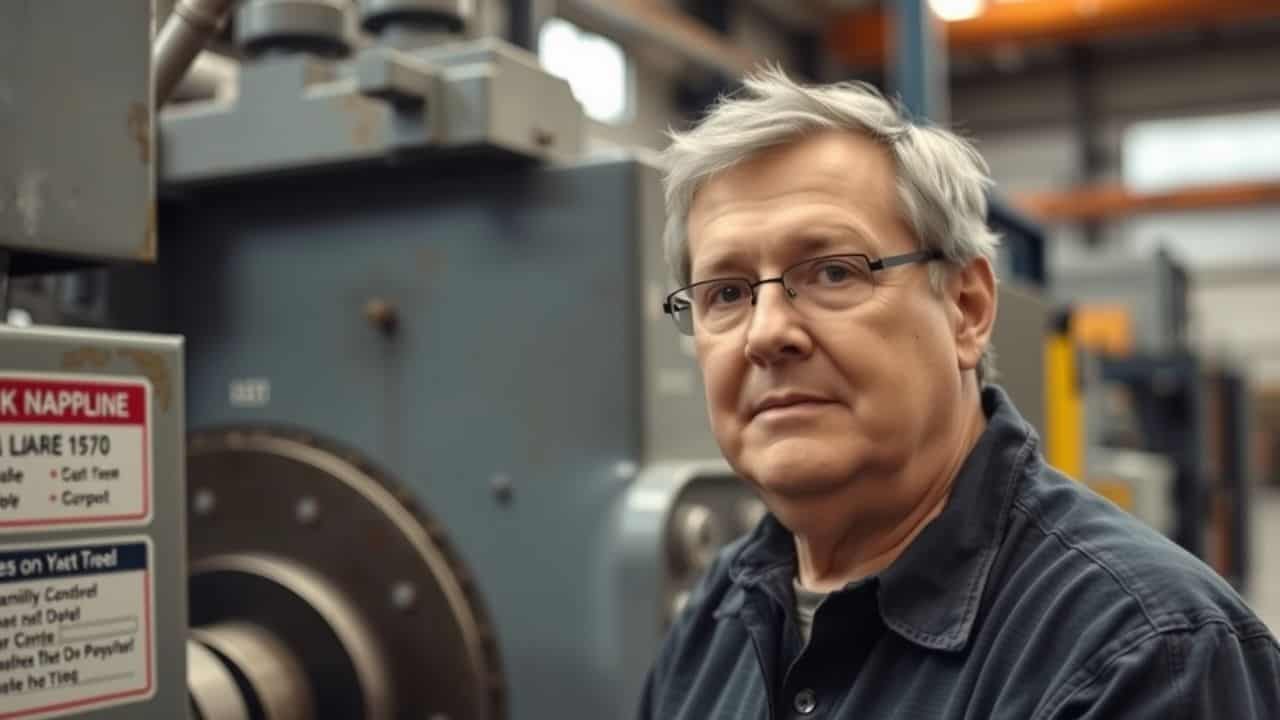Family businesses often struggle with managing their fixed assets. Fixed assets are key items a business owns and uses for more than a year. This blog will explain what fixed assets are in a business and how to make the most of them.
Ready to boost your family business? Let’s go!
Key Takeaways
Fixed assets are long-lasting items a family business owns and uses for over a year, like buildings, machines, and vehicles. They make up at least 50% of a family firm’s worth.
Smart management of fixed assets can boost productivity, open new income streams, and help secure loans. Only 30% of family businesses survive past the second generation, so good asset management is key.
Proper tracking, maintenance, and upgrading of fixed assets can save money and improve business performance. Using software to monitor asset use and health helps maximize their value.
Depreciation methods spread out the cost of assets over time. Options include straight-line, units of production, and declining balance methods. Following accounting rules like GAAP and IFRS is important for legal compliance.
Future-proofing your business involves investing in new tech like AI and cloud tools, which can boost income by up to 30%. Regular asset checks, smart replacement planning, and setting aside funds for maintenance help manage costs and keep the business strong.
Table of Contents
Defining Fixed Assets

Fixed assets are the backbone of many family businesses. They’re the big-ticket items that stick around for more than a year and help your company make money.
Meaning and Examples

Fixed assets are things a business owns that last a long time. They help make money and keep the company running smoothly. Think of them as the big-ticket items that stick around. What is a fixed asset? It’s stuff like buildings, machines, and computers.
These aren’t things you use up quickly, like paper or pens.
Let’s chat about some examples. A family-owned bakery might have a huge oven as a fixed asset. A farm could count its tractors and barns. For a small clothing shop, the cash register and display racks are fixed assets.
I once helped my aunt set up her flower shop. We listed her delivery van and coolers as fixed assets, using fixed asset tracking software. It’s important to know what counts because it affects taxes and financial planning.
Fixed assets are the backbone of a family business, supporting its growth and stability.
Significance in Family Businesses

Fixed assets play a key role in family businesses. They form the backbone of operations and help create wealth. These assets, like buildings and machines, make up at least 50% of a family firm’s worth.
They’re vital for daily tasks and long-term growth. Fixed assets also boost a company’s value when seeking loans or selling the business.
Family firms often face unique challenges with fixed assets. Only 30% survive past the second generation. This fact highlights the need for smart asset management. Investing in new tech or equipment can be tough during leadership changes.
Still, family-run companies tend to spend more on research and development. This focus on innovation helps them stay competitive. The next section will explore common fixed assets found in family businesses.
It will also discuss how these items support various business functions.
Common Fixed Assets in Family Businesses

Family businesses often rely on key assets to keep things running smoothly. These assets can range from buildings to machines, and they play a big role in day-to-day operations.
Property and Facilities

Property and facilities form the backbone of many family businesses. These fixed assets often include buildings, land, and office spaces. They provide a physical home for your company’s operations.
Think of them as the stage where your business magic happens. Your property might be a cozy storefront or a sprawling warehouse. Either way, it’s a key player in your business success.
These assets do more than just house your business. They can boost your company’s value and serve as loan collateral. Smart management of these assets can make a big difference to your bottom line.
Your business property is more than just bricks and mortar. It’s the foundation of your family’s legacy.
Next, let’s look at how tools and machinery fit into the fixed asset picture.
Tools and Machinery

Tools and machinery form the backbone of many family businesses. These assets help create products and provide services that keep the company running. From simple hand tools to complex machines, they’re vital for daily operations.
A bakery might rely on mixers and ovens, while a construction firm needs excavators and drills.
Smart business owners know these assets are more than just equipment. They’re investments that can boost productivity and profits. Keeping tools and machinery in top shape is key. Regular maintenance helps avoid costly breakdowns and keeps the business humming along smoothly.
It’s also smart to stay up-to-date with new tech. This can give a family business an edge over competitors and open up new income streams.
Fleet and Transport Solutions

Fleet and transport solutions play a big role in family businesses. Company cars, delivery trucks, and other vehicles count as fixed assets. These assets help businesses run smoothly and make more money.
They’re not just for show – they’re workhorses that keep things moving.
I once worked for a family-owned bakery. Their delivery vans were key to their success. Every morning, those vans would zip around town, bringing fresh bread to stores and cafés. Without them, the business couldn’t function.
But here’s the thing: these assets lose value over time. That’s why smart business owners track their worth and plan for replacements. It’s all part of good asset management.
Functional Impact of Fixed Assets in Family Business Operations

Fixed assets play a key role in family businesses. They support daily tasks and open doors to new income streams. These assets can also serve as backup when seeking loans, giving the business more financial options.
Supporting Key Business Functions

Fixed assets play a crucial role in supporting key business functions. They form the backbone of daily operations, enabling smooth workflows and efficient processes. For example, a family-owned bakery relies on its ovens, mixers, and refrigerators to produce fresh goods.
These tools directly impact product quality and output capacity. Similarly, a small trucking company depends on its fleet to deliver goods on time. Without these assets, core business activities would grind to a halt.
Smart management of fixed assets boosts productivity and financial stability. Regular upkeep prevents unexpected breakdowns that could disrupt production. Proper tracking helps businesses make informed decisions about upgrades or replacements.
This proactive approach keeps operations running smoothly and attracts potential investors. Let’s explore how fixed assets contribute to revenue opportunities in family businesses.
Enhancing Revenue Opportunities
Fixed assets support business functions and can increase your income. Savvy family businesses utilize their property, machines, and vehicles to generate additional revenue. For instance, you could lease unused space in your building or offer your delivery trucks for local moves during downtime.
These strategies can enhance your profits without significant additional effort. It’s akin to uncovering valuable resources within your own business. By approaching your fixed assets creatively, you create new revenue streams.
This method helps cover expenses and can finance future expansion.
“Your fixed assets are more than just tools – they’re potential revenue sources waiting to be utilized.”
Serving as Loan Collateral
Fixed assets are crucial for obtaining loans. Banks favor them as collateral due to their solidity and value. Your family business’s property, machines, or vehicles can facilitate funding opportunities.
Lenders thoroughly examine these assets, assessing their condition and market value. Proper maintenance of your assets can enhance their value from a lender’s perspective.
A valuable insight from my business experience: Maintain comprehensive records of your fixed assets. This approach significantly impacts loan negotiations. I once observed a small bakery secure a substantial loan due to their well-maintained ovens and delivery vans.
The lender was impressed by their asset management practices. It’s worth noting that these assets depreciate over time, which affects the borrowing amount they can support. Next, we’ll explore effective strategies for managing your fixed assets.
Financial Treatment of Fixed Assets

Fixed assets need proper financial handling. This includes keeping records, figuring out wear and tear, and following rules. Want to learn more about how to manage your family business’s big-ticket items? Keep reading!
Documentation and Monitoring
Keeping track of fixed assets is crucial for family businesses. Good records help you manage your stuff better and stay on top of your finances.
- Create a central database: Put all your asset info in one place. This makes it easy for everyone to access and work together.
- Do regular checks: Look over your records often. This keeps everything up-to-date and accurate.
- Use smart tools: Try out software that tracks assets automatically. It saves time and cuts down on mistakes.
- Look at the data: Use analytics to predict when things might need fixing. This helps you plan ahead and avoid surprises.
- Write down maintenance details: Keep a log of all repairs and upkeep. It helps you spot patterns and make smart choices.
- Keep good records for rules: Proper paperwork makes following regulations easier. It can save you headaches during audits or tax time.
Depreciation Methods
After tracking your assets, it’s important to consider how they decrease in value over time. Depreciation methods assist in calculating this decrease. These methods distribute the cost of an asset throughout its useful life.
Several approaches exist for this purpose.
The straight-line method is the most straightforward. It divides the cost equally each year. The units of production method calculates the decrease based on asset usage. For quicker write-offs, consider the declining balance method.
It allocates more of the decrease in the initial years. An alternative is the sum of the years’ digits method. Quality software can manage all these methods for you. These methods apply to tangible assets valued over $500 with a lifespan exceeding one year.
Depreciation is the duct tape of accounting – it holds everything together.
Regulatory Requirements and Reporting
Family businesses must follow strict rules when dealing with fixed assets. These rules come from big accounting groups like GAAP and IFRS. They tell us how to record, value, and report our assets.
As a business owner, I’ve learned that keeping up with these rules can be tricky. But it’s crucial for staying legal and making smart money choices.
Reporting fixed assets isn’t just about filling out forms. It’s about showing the true value of your business. You need to list all your assets, their worth, and how they change over time.
This helps others understand your company’s financial health. I’ve found that good reporting can open doors to loans or new investors. It also helps me make better choices about when to buy or sell assets.
Strategic Approaches to Fixed Asset Management

Fixed assets can make or break a family business. Smart management of these assets can boost your bottom line. Let’s explore some savvy ways to get the most out of your company’s big-ticket items.
Maximizing Asset Performance
Fixed assets are the backbone of many family businesses. Smart management can boost their value and performance.
- Regular maintenance: Keep equipment in top shape. This cuts repair costs and extends asset life.
- Staff training: Teach workers how to use assets right. This reduces wear and tear and boosts output.
- Upgrade wisely: Replace old assets with newer, more efficient ones. This can lead to big savings and better products.
- Track usage: Use software to monitor how often assets are used. This helps spot underused items and maximize their potential.
- Optimize schedules: Plan asset use to avoid idle time. This increases productivity and return on investment.
- Implement RFID: Use radio-frequency ID tags to track assets. This improves accuracy and saves time in asset management.
- Use CMMS: Adopt computerized maintenance management systems. These help schedule upkeep and track asset health.
- Review depreciation methods: Choose the best way to report asset value loss. This can affect your financial statements and taxes.
- Consider leasing: Sometimes, leasing can be smarter than buying. It frees up cash and allows for easier upgrades.
- Plan for the future: Align asset purchases with long-term business goals. This ensures you invest in the right tools for growth.
Asset Renewal and Replacement Strategies
Smart asset renewal and replacement strategies keep family businesses strong. These tactics help owners make the most of their fixed assets over time.
- Regular check-ups: Set up a schedule to inspect all fixed assets. This helps spot wear and tear early. Fix small issues before they become big problems.
- Tech upgrades: Stay current with new tools and machines. Modern equipment often boosts output and cuts costs. It’s a win-win for your bottom line.
- Sell old assets: Don’t let outdated items gather dust. Sell them while they still have value. Use the money to fund new purchases or other business needs.
- Lease vs. buy: Sometimes leasing makes more sense than buying. It can free up cash and give you access to the latest gear. Weigh the pros and cons for each big purchase.
- Plan ahead: Create a long-term replacement schedule. This helps spread out big costs over time. It also keeps your business running smoothly without sudden gaps.
- Green upgrades: Look for eco-friendly replacements. They often use less energy and last longer. Plus, they can boost your brand image with eco-conscious customers.
- Training focus: When you get new assets, train staff well. This helps them use the equipment safely and efficiently. It also extends the life of your investments.
- Budget wisely: Set aside money each year for asset renewal. This way, you’re ready when it’s time to replace something big. No scrambling for funds at the last minute.
- Tax smart: Know the tax rules for asset purchases and sales. You might save money by timing these moves right. Chat with your accountant to make the most of tax benefits.
- Keep good records: Track all your fixed assets carefully. Note purchase dates, costs, and maintenance history. This info helps with future planning and financial reports.
Future-Proofing Business Plans
Asset renewal sets the stage for future-proofing your family business. Looking ahead is key to staying strong in a fast-changing world. Smart owners plan for what’s coming next. They build flexible systems that can grow with their company.
Tech plays a big role in staying ready for the future. Businesses that use new tools can boost their income by up to 30%. It’s smart to invest in things like AI, data tools, and cloud tech.
These help you work smarter and faster. You’ll also want to hire people who know how to use these tools well. With the right mix of tech and talent, your business can adapt to new challenges.
This way, you’ll be ready for whatever comes next in your industry.
Overcoming Fixed Asset Management Challenges

Managing fixed assets can be tough. Smart strategies can help you handle costs and keep your business strong.
Managing Depreciation and Asset Devaluation
Depreciation can be a real headache for family businesses. It’s like watching your favorite car lose value over time. But don’t fret! Smart asset management can help you stay on top of this issue.
By tracking depreciation closely, you can optimize your taxes and keep your financial statements in good shape. I’ve found that using management software makes this process much easier.
It’s like having a personal assistant for your assets!
Asset devaluation is another tricky beast. It can hit your balance sheet hard if you’re not careful. But here’s a pro tip: keep a close eye on your net fixed assets. This figure shows the real value of your assets after depreciation.
By staying on top of this number, you can make smarter decisions about when to replace or upgrade your assets. Trust me, I’ve seen how this approach can really boost a family business’s bottom line.
Navigating High-Cost Investments
Big-ticket items can be tough for family businesses. Buying new gear or buildings often means shelling out lots of cash. It’s smart to plan ahead and weigh all options. Maybe leasing or renting makes more sense than buying outright.
Or you could team up with other businesses to share costs. Don’t forget to check for tax breaks or grants that might help.
Smart tech can make managing these pricey assets easier. Cloud systems help track usage and maintenance needs. This way, you get the most bang for your buck. Regular check-ups keep things running smoothly and avoid surprise breakdowns.
With good planning, even costly investments can pay off big time for your family biz.
Addressing Ongoing Maintenance Expenses
Keeping your business assets in top shape can be financially challenging. Regular upkeep is essential to avoid significant, costly surprises in the future. I learned this lesson when my coffee shop’s roaster broke down during peak hours.
Now, I set aside funds each month for maintenance. It’s a reserve for my machines. I also keep a fixed asset register to track all the details. This helps me identify patterns and plan ahead.
It’s preferable to being unprepared when something malfunctions.
Digital tools can significantly improve management of these expenses. I use an app that reminds me when it’s time to service each piece of equipment. It’s like having an assistant who always remembers an oil change or filter replacement.
It also helps with budgeting. I can quickly see how much I’m spending on upkeep for each asset. This information is valuable when deciding whether to repair or replace something. Good records can also lead to tax deductions.
It’s about working efficiently and effectively.
People Also Ask
What are fixed assets in a family business?
Fixed assets are long-term resources a family business owns. They include property, plant, and equipment (PPE). These assets help the business make money over time. Think of them as the backbone of your operation.
How do we value fixed assets?
Valuing fixed assets isn’t rocket science. Start with the historical cost. Then, subtract accumulated depreciation. This gives you the book value. It’s like figuring out how much your car is worth after years of use.
Why is classifying assets important?
Classifying assets keeps your books in order. It helps with financial reporting and tax returns. Plus, it’s crucial for following GAAP and IFRS rules. Think of it as organizing your toolbox – everything has its place.
How does depreciation affect fixed assets?
Depreciation is like Father Time for your assets. It reduces their value over their lifecycle. This shows up on your income statement as an expense. It’s a way to spread the cost of an asset over its useful life.
What’s the difference between tangible and intangible assets?
Tangible assets are things you can touch, like buildings or equipment. Intangible assets are non-physical, like trademarks or goodwill. Both are valuable, but they’re treated differently in accounting. It’s like comparing apples and ideas.
References
https://pmc.ncbi.nlm.nih.gov/articles/PMC9838288/
https://www.netsuite.com/portal/resource/articles/accounting/fixed-asset.shtml (2022-09-19)
https://inspiredeconomist.com/articles/fixed-assets/ (2023-10-17)
https://www.robinwaite.com/blog/the-impact-of-fixed-assets-management-on-business-valuation-and-success (2024-10-24)
https://walkerreid.com/5-tips-for-fixed-asset-management-success/
https://www.ibntech.com/blog/how-to-improve-fixed-asset-management/
https://kissflow.com/finance/asset-management/fixed-asset-depreciation-methods/ (2024-03-22)
https://www.netsuite.com/portal/resource/articles/accounting/fixed-assets-accounting-basics.shtml (2022-06-29)
https://cpcongroup.com/fixed-asset-management/
https://www.waystone.com/futureproofing-asset-management-key-strategies-to-succeed/ (2024-08-28)
https://blog.invgate.com/fixed-assets (2024-09-11)
